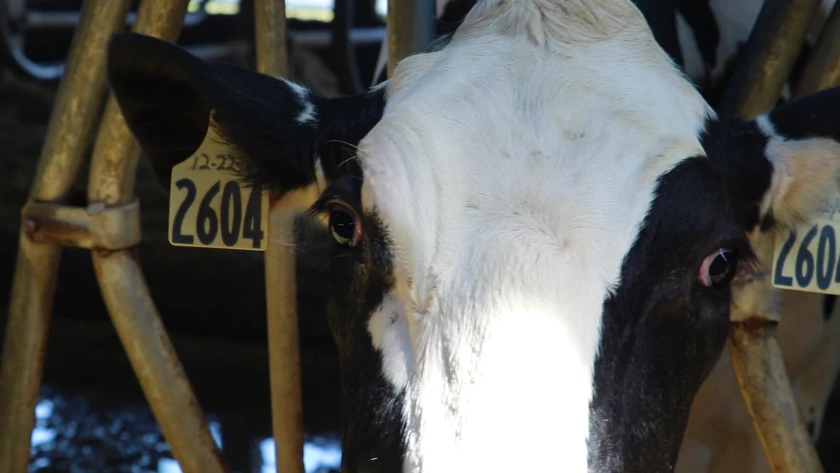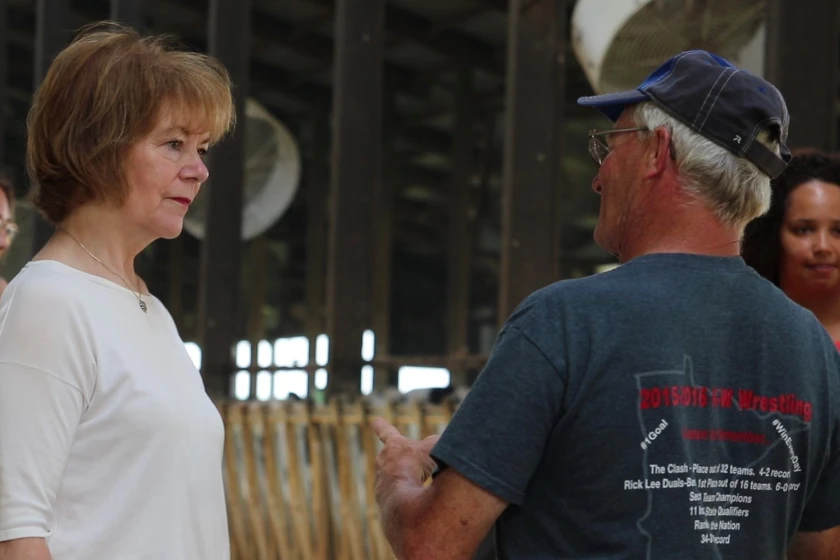
Dairy farmers and leaders of Minnesota’s ag industry sounded off on the recent processing struggles currently hitting some operations.
To recognize the final week of National Dairy Month, U.S. Sen. Tina Smith was joined by Minnesota Agriculture Commissioner Thom Petersen on June 27 at Bombay Dairy Farm, which is operated by the Lexvold family.
They received an earful on the current struggles the industry is facing, including processing capacity hitting its cap in the region.
Jon Huseth, owner and operator of Clay View Dairy in Goodhue, Minnesota, said that aside from a dairy farm’s banker, its processor is the most important relationship it has.
“There’s a big processing problem in the Midwest, where we have no capacity left,” said Huseth, who said he milks around 1,250 cows on his operation.
He said issues with labor and management make the processing overload even worse.
“Dairy is seven days a week, 365 days a year, and we can’t shut the spigot off on the milk,” said Huseth. “Any mishap on the processing end when you’re at 100% capacity, or even more, is just very detrimental.”
Huseth said his processor has no plans for expansion, and expansion would require cooperative approval.
A need for more processors
Huseth said the state “definitely” needs more processors or an expansion of current ones, but he believes that isn’t in the cards.
“Some of our environmental — not so much regulations, but processes — have become so long and cumbersome,” he said. “You combine that with the supply chain issues, you’re looking at, if you want to increase capacity today, a minimum of two, three years before that comes to fruition.”
He said the equipment for expansion is a “minimum of 18 months” out.
“We have a big problem that isn’t going to be solved in six months,” he said.
Huseth and his wife came back to his family’s farm in 1996. He said he’s never seen something like this when it comes to processing capacity. Their farm is more fortunate than others who’ve had to dump milk or sell loads at discounted rates.
“Always in this state, or not only the state, but the Midwest, always had adequate processing throughout my entire life,” said Huseth.
He said that’s due to no growth in an area of the industry that’s lost significant capacity, particularly in southeast Minnesota. In November 2019, Associated Milk Producers announced that it would cease operations in Rochester, resulting in the loss of 75 jobs at the time. The AMPI plant had not been running at capacity for years before that.
“That’s part of the problem we have in southeast Minnesota,” said Huseth of the AMPI plant in Rochester. “Overnight, that was a million per day that they ran through that plant, so that was a million or million-three pounds that had to find another home.”
Spring flush
Lucas Sjostrom, executive director of the Minnesota Milk Producers Association, downplayed the processing situation in the state and said he’s only heard of a handful of farms facing a processing issue.
“Occasionally a creamery will ask you to dump milk,” he said. “Those farms typically get paid, or should get paid.”
Every year from May to June, milk production enters a spring flush, which always creates local surpluses, explained Sjostrom. He said this year’s spring flush is essentially over because of the drought.
“We’re on the best hay, and corn silage has fermented well, and some of the seasonal herds have come back into production that were maybe off in the winter,” said Sjostrom of the spring period. “Those three things come every year, and we usually dump milk, maybe due to logistics purposes every year.”

But he said unfortunately this year, it’s the same farms going through the same processing issues every week.
As to whether the state has too few processors, Sjostrom said there are two ways to answer that.
“If the prices are high in six months, you might say we have too many processors,” he said. “But right now, we certainly could use more competition. And that’s what our organization stands for, is more fluid competition amongst dairy farmers for their milk.”
Minnesota Agriculture Commissioner Thom Petersen said he believes there’s enough processors in the state to keep pace with the milk coming in from Minnesota dairies; it’s just about keeping them going.
“We do at the moment,” he said of having enough processors in the state. “But eventually, we’re going to need to build some out.”
On June 27, Petersen was unable to comment on the ongoing situation at Hastings Creamery which buys raw milk from 45 farms in Minnesota and Wisconsin.
“We’re working through some issues, I’d say, and there’s some really unique challenges,” said Petersen. “Some of our trade partners aren’t buying as much for the moment, but I think it’ll correct.”
His advice to Minnesota dairy farms who are on the verge of losing their processor is to reach out to the MDA.
“Farmers are pretty good about calling around themselves to find a home for their milk, but we try to help them brainstorm ideas,” he said. “I try to keep in touch with as many of the (processing) CEOs and plant managers to know who might have room, or who might be interested in picking up a few, but right now, it’s pretty tough.”
Petersen said one of the solutions could be shipping milk out of state to the coasts or down south, but that’s cost prohibitive, he said.
“That’s where a lot of times you’ll look and say, ‘Is it cheaper to dump it than it is to pay the trucking and truck it to somewhere?’ And so all those dynamics come into play,” said Petersen.























